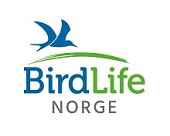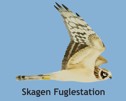
|
|
Greylag Goose on the move The majority of the species appear to arrive earlier. Among these, the Greylag Goose has advanced its arrival date the most, with 14.8 days prior to arrival. This species also shows a statistically significant change. The annual report for 2021 is available!
(The annual report 2021 from Jomfruland and Lista can be read in Norwegian HERE) Low trapping numbers The ringing figures for Jomfruland Bird Observatory in 2021 were below average by 30.2% in the spring and 33.0% in the autumn. The ringing figures for 2021 ended up below the average for Lista Bird Observatory as well. This is mainly due to 36.1% lower autumn ringing numbers than normal. The spring season at Lista was 8.8% above average. At Lista BO, 2596 individuals were registered in the standardized ringing, which is the second lowest number since 1990. The monitoring in the field also showed that worryingly many of the species had particularly low numbers. Arrival was later than expected In our phenology index for the spring, we show in the report that 30 selected migratory bird species now arrive in average 3,1 days earlier than they did when monitoring began in 1990. However, the arrival in 2021, was 4.6 days later than expected in relation to the development of our index. Consistently cool weather from the beginning of April to approx. 10th of May, was probably the main reason why as many as 24 out of 30 species came later than expected, partly much later. A general negative development In general terms, it is visible that the low numbers for many of the bird species that were registered in the autumn of 2021 at Jomfruland and Lista, are in the same line as the general negative development for the bird populations. This tendence was emphasized in the new red list published on November 24 and is also presented on reports which show a general decline in Europe's bird populations (including Burns et al. 2021.). Although we at Lista do not only register strictly Norwegian populations, the low numbers of waders, such as Oystercatcher, Lapwing, Ruff, Whimbrel, Curlew and Redshank, as well as the numbers of Black-headed Gull, Fulmar and Common Tern follow the sad development we see in the Norwegian red list. Important and unique monitoring The monitoring at the bird observatories is unique in the Norwegian context providing information on the phenology (migratory route) of our most common passerine birds. This makes us able to see how climate change affects bird migration. The monitoring is also one of the few methods that can give us information about winter survival and breeding success of the different species. In addition, it provides important information about long-term trends in the populations of a variety of bird species from different habitats and environments, and from a large geographical area. The annual report from the bird stations for 2021 can be read in Norwegian HERE. | ||||||

| Ringing numbers |
|
Sorry, but we are outside of the spring and autum seasons. Detailed log |
| Reportasje fra Lista FS i Aftenposten |

|
| Seasonal deviation | ||||||||||||||||||||||||||||||
|
|
Følg Følg Lista FS på facebook.com |
| Siste 5 på siden |
|
Festivalgjester presenterer ny fuglebok Lista Fuglefestival 2025 Looking for bird ringers for spring and/or autumn 2025 Begynnerkurs i ringmerking: 26.-27. april 2025 Report from autumn 2024 |
| Nyheter fra NOF |
|
Ny taksonomi på vingene –... Klima- og miljøministeren vil... Har du funnet en måkeunge?... Tvillingartene: Hauk over hauk Hvor mange fuglearter finnes... Statsforvalteren opphever... Storskarv i Europa i... Norge må heve stemmen for... |
Lista Fuglestasjon
Fyrveien 6
NO-4563 Borhaug
post@listafuglestasjon.no Tlf: 949 86 793
 |  |


 Only in English
Only in English



